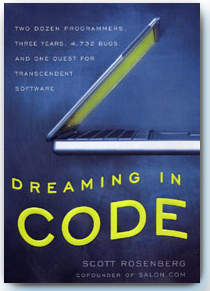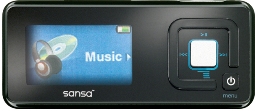 Recently I’ve read the book Dreaming in Code by Scott Rosenberg, which primarily is a novel about the development of the open source project Chandler, but is full of diversions into related areas and side-stories about software, software projects, developments and more.
Recently I’ve read the book Dreaming in Code by Scott Rosenberg, which primarily is a novel about the development of the open source project Chandler, but is full of diversions into related areas and side-stories about software, software projects, developments and more.
The project was initiated by Mitch Kapor who founded the Open Source Application Foundation and who’s perhaps most known for having created Lotus 1-2-3 back in 1982 and being co-founder of the Electronic Frontier Foundation in 1990.
Scott writes a lot about software development and makes numerous references to the classic The Mythical Man-Month (which I unfortunately haven’t read yet but I have it lying around at home just waiting…).
It is quite obvious that the guys never really could decide what exactly Chandler should do, and thus they spent ages arguing on the goals and the design and since they’re funded by an organization that (seemingly) doesn’t care about any profit or anything from this project, there was a whole team who could be lagging their project for ages without any real damage being done anywhere. In fact, I still don’t understand what Chandler does and what useful purpose it tries to fill!
Kapor basically spent 5 Million USD out of his own pocket money in an attempt to repeat his former favorite application called Agenda, but without knowing exactly what it should do and how. Does it sound like a solid foundation for how to make a killer app?
It is an interesting read, and after having been in the business as a consultant for more than a decade, I do recognize a lot in the book from real-life experiences. The book doesn’t exaggerate or present a worst-case scenario, it happens to follow a project that is merely a project amongst others that just… doesn’t get things done right.


 SanDisk apparently has released updated versions of their Sansa c200 and e200 series, called c200 v2 and e200 v2. Since
SanDisk apparently has released updated versions of their Sansa c200 and e200 series, called c200 v2 and e200 v2. Since 






